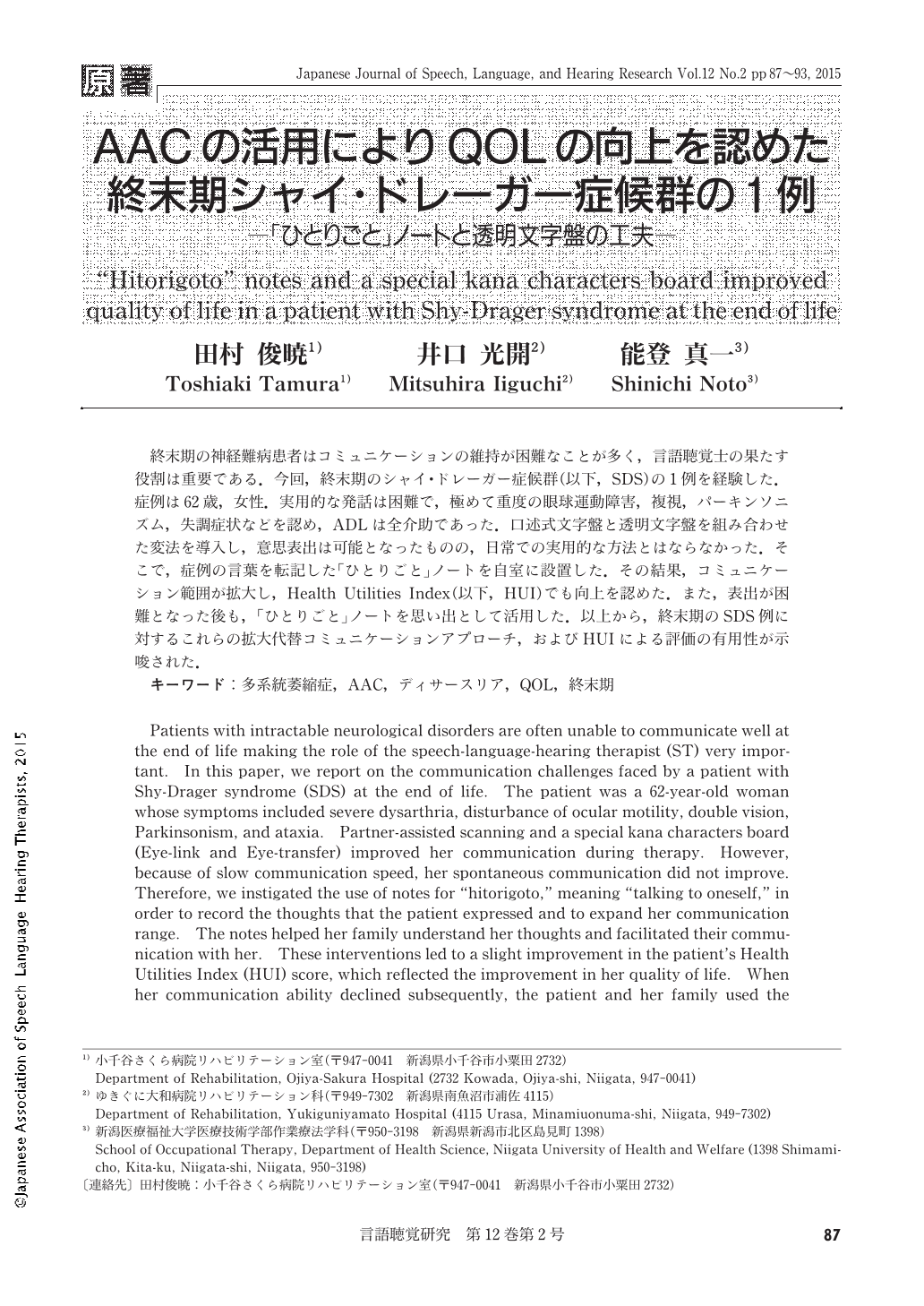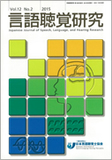Japanese
English
- 有料閲覧
- Abstract 文献概要
- 1ページ目 Look Inside
- 参考文献 Reference
- サイト内被引用 Cited by
終末期の神経難病患者はコミュニケーションの維持が困難なことが多く,言語聴覚士の果たす役割は重要である.今回,終末期のシャイ・ドレーガー症候群(以下,SDS)の1例を経験した.症例は62歳,女性.実用的な発話は困難で,極めて重度の眼球運動障害,複視,パーキンソニズム,失調症状などを認め,ADLは全介助であった.口述式文字盤と透明文字盤を組み合わせた変法を導入し,意思表出は可能となったものの,日常での実用的な方法とはならなかった.そこで,症例の言葉を転記した「ひとりごと」ノートを自室に設置した.その結果,コミュニケーション範囲が拡大し,Health Utilities Index(以下,HUI)でも向上を認めた.また,表出が困難となった後も,「ひとりごと」ノートを思い出として活用した.以上から,終末期のSDS例に対するこれらの拡大代替コミュニケーションアプローチ,およびHUIによる評価の有用性が示唆された.
Patients with intractable neurological disorders are often unable to communicate well at the end of life making the role of the speech-language-hearing therapist(ST)very important. In this paper, we report on the communication challenges faced by a patient with Shy-Drager syndrome(SDS)at the end of life. The patient was a 62-year-old woman whose symptoms included severe dysarthria, disturbance of ocular motility, double vision, Parkinsonism, and ataxia. Partner-assisted scanning and a special kana characters board(Eye-link and Eye-transfer)improved her communication during therapy. However, because of slow communication speed, her spontaneous communication did not improve. Therefore, we instigated the use of notes for "hitorigoto," meaning "talking to oneself," in order to record the thoughts that the patient expressed and to expand her communication range. The notes helped her family understand her thoughts and facilitated their communication with her. These interventions led to a slight improvement in the patient's Health Utilities Index(HUI)score, which reflected the improvement in her quality of life. When her communication ability declined subsequently, the patient and her family used the "hitorigoto" notes to commemorate her memory. The use of such notes can be useful as an augmentative and alternative communication system to improve HUI and quality of life in patients with severe SDS.

Copyright © 2015, Japanese Association of Speech-Language-Hearing Therapists. All rights reserved.


